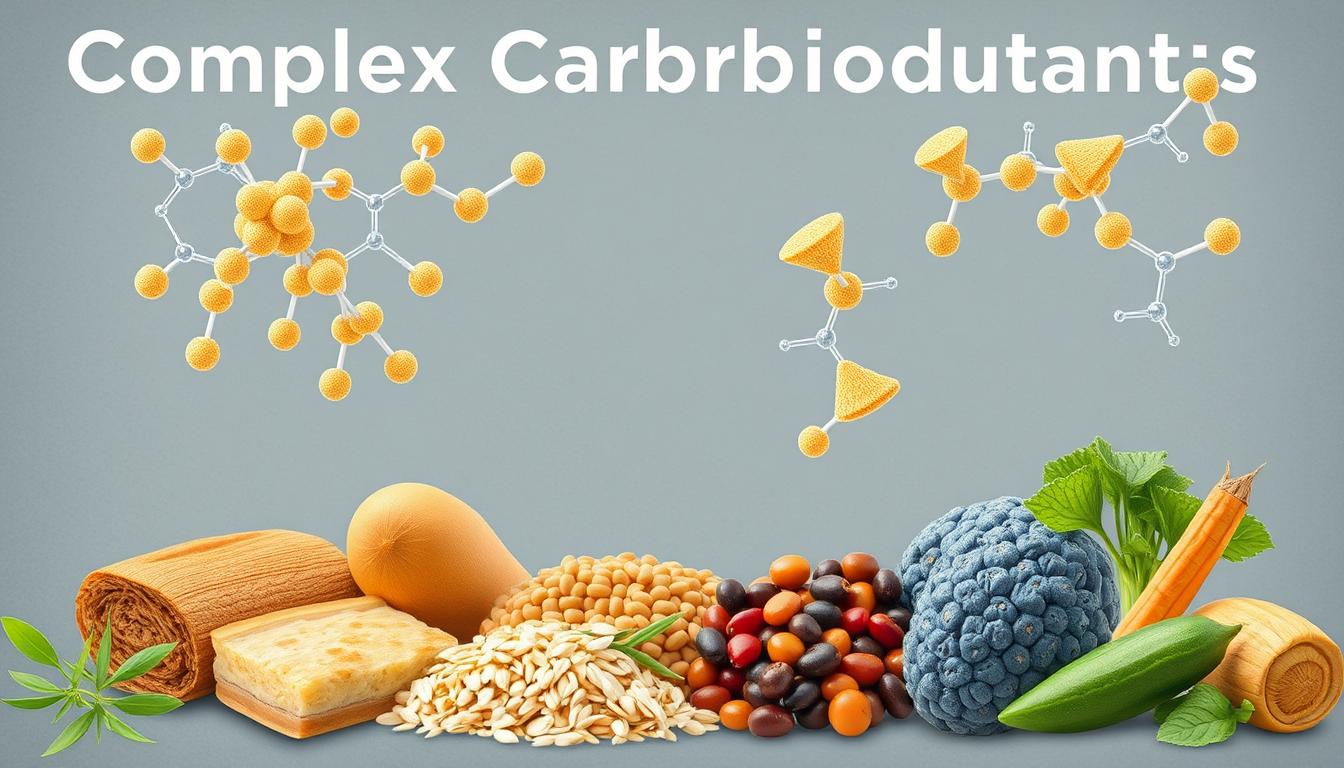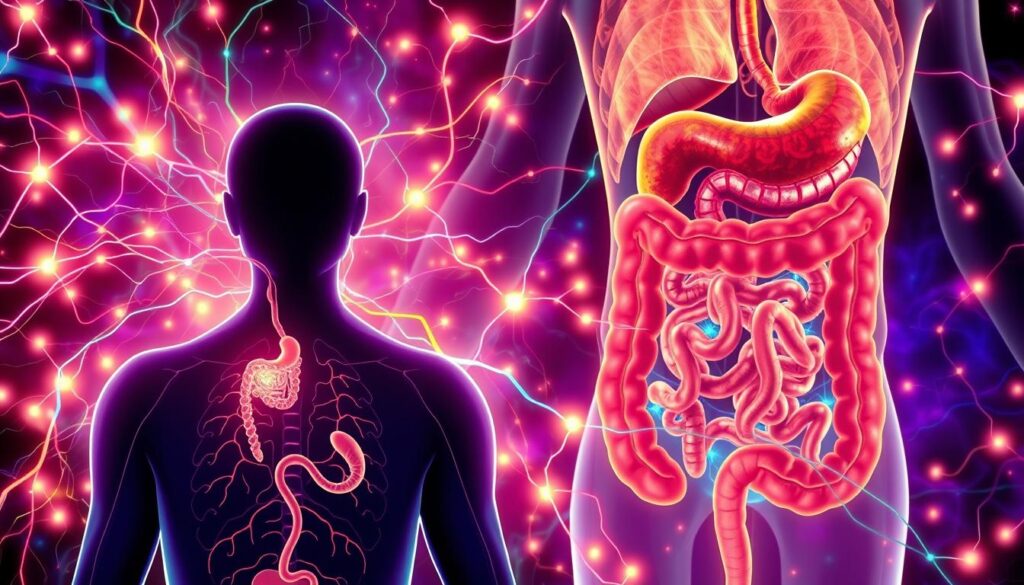Blog
Smart Carbs: Which Carbohydrates to Eat for Energy, Fiber, and Weight Management

Carbohydrates are a vital part of our diet, playing a crucial role in energy production, fiber intake, and weight management. However, not all carbs are created equal, and the confusion surrounding them can make it challenging to make informed choices.
Distinguishing between healthy and unhealthy carbohydrate sources is essential. According to the American Heart Association, it’s crucial to limit refined sugars and choose complex carbohydrates, such as whole grains, legumes, and starchy vegetables, which provide a slower release of glucose into the bloodstream and are rich in fiber and nutrients.
Key Takeaways
- Carbohydrates are vital for energy, fiber, and weight management.
- Distinguishing between simple and complex carbohydrates is crucial.
- Complex carbohydrates, such as whole grains and legumes, provide sustained energy and are rich in fiber.
- Limiting refined sugars is essential for a healthy diet.
- Choosing the right carbohydrates can aid in weight management.
The Carbohydrate Confusion: Separating Fact from Fiction
Despite their importance, carbohydrates have garnered a bad reputation, largely due to confusion and misinformation. The truth is, not all carbohydrates are created equal, and understanding their role in our diet is crucial for making informed nutritional decisions.
Why Carbs Have Gotten a Bad Reputation
The negative perception of carbohydrates can be attributed to several factors, including the rise of low-carb diets and the misconception that all carbs lead to weight gain. Diets that drastically cut carbohydrate intake often overlook the distinction between refined and whole carbohydrates, leading to an unfair generalization about their health effects.

The Scientific Truth About Carbohydrates and Health
Scientific evidence supports the health benefits of certain types of carbohydrates, particularly those rich in fiber and nutrients. Whole grains, fruits, and vegetables are examples of healthy carb sources that provide essential vitamins, minerals, and fiber, contributing to a balanced diet and overall well-being. It’s crucial to focus on avoiding refined grains and added sugars, rather than eliminating carbohydrates altogether.
By understanding the differences between various carbohydrate sources and incorporating healthy options into our diets, we can harness their nutritional benefits while minimizing potential drawbacks.
Understanding Healthy Carbs: Not All Carbohydrates Are Created Equal
Not all carbs are created equal; understanding their differences is key to harnessing their nutritional benefits. Carbohydrates are a primary source of energy for the body, and their impact on our health varies significantly based on their type and quality.
Simple vs. Complex Carbohydrates
Carbohydrates are broadly classified into simple and complex categories. Simple carbohydrates, or sugars, are quickly digested, causing a rapid increase in blood sugar levels. On the other hand, complex carbohydrates, including whole grains, legumes, and starchy vegetables, are digested slowly, providing a more stable energy release.
A list of complex carbohydrates includes:
- Whole grains like brown rice, quinoa, and whole wheat bread
- Legumes such as lentils, chickpeas, and black beans
- Starchy vegetables like sweet potatoes and corn
The Role of Glycemic Index and Glycemic Load
The glycemic index (GI) and glycemic load (GL) are tools used to measure the impact of carbohydrates on blood sugar levels. The GI ranks foods based on how quickly they raise blood sugar, while the GL takes into account the serving size, providing a more comprehensive picture.
| Food | Glycemic Index (GI) | Glycemic Load (GL) |
|---|---|---|
| White Bread | 70-80 | 10-12 |
| Brown Rice | 50 | 16 |
| Sweet Potato | 44-96 | 10-17 |
Understanding the GI and GL of different foods can help individuals make informed choices, especially those managing blood sugar levels or seeking to maintain energy stability throughout the day.
Choosing complex carbohydrates and being mindful of the glycemic index and load can significantly enhance dietary quality and support overall health.
The Energy Connection: How Carbohydrates Fuel Your Body
Carbohydrates play a crucial role in energy production, serving as the body’s preferred fuel for both everyday activities and strenuous exercise. They are broken down into glucose, which is then used by cells throughout the body for energy.
Carbohydrates as Your Body’s Primary Fuel Source
The body relies on carbohydrates to function properly. Healthy Carbs are particularly important as they provide sustained energy without causing a spike in blood sugar levels. When you consume carbohydrates, your body converts them into glucose, which is then absorbed by cells to provide energy.
The Brain-Carb Connection
The brain is particularly dependent on glucose for its functioning. It consumes a significant portion of the body’s glucose, highlighting the importance of maintaining adequate carbohydrate intake for cognitive functions. A diet rich in healthy carbohydrates supports brain health and overall cognitive performance.
Energy Stability Throughout the Day
Consuming the right types of carbohydrates can help maintain energy stability throughout the day. This is particularly important for individuals with active lifestyles or those engaged in carbs for athletic performance. By incorporating complex carbohydrates and fiber-rich foods into your diet, you can achieve a more stable energy release, avoiding the peaks and troughs associated with simple sugars.
Fiber-Rich Carbohydrates: The Digestive Health Heroes
Fiber-rich carbohydrates are essential for a healthy digestive system and overall nutritional balance. They play a vital role in maintaining digestive health, satiety, and even supporting healthy blood sugar levels.
Soluble vs. Insoluble Fiber
Fiber comes in two main forms: soluble and insoluble. Soluble fiber dissolves in water, forming a gel-like substance that helps slow down digestion and absorption of nutrients. It’s found in foods like oats, barley, nuts, and fruits. On the other hand, insoluble fiber does not dissolve in water and helps add bulk to stool, promoting regular bowel movements. It’s abundant in whole grains, vegetables, and wheat bran.
Health Benefits of High-Fiber Carbohydrates
A diet rich in fiber has numerous health benefits, including:
- Promoting regular bowel movements and preventing constipation
- Supporting healthy blood sugar levels
- Aiding in weight management by enhancing satiety
- Lowering cholesterol levels, thereby reducing heart disease risk
Daily Fiber Intake Recommendations
The daily recommended intake of fiber varies by age and sex. Generally, the Aim for 25-30 grams per day is a good guideline. Here’s a simple table to illustrate the fiber content in some common foods:
| Food | Serving Size | Fiber Content (grams) |
|---|---|---|
| Oatmeal | 1 cup cooked | 4 |
| Apple | 1 medium | 4.5 |
| Broccoli | 1 cup cooked | 5 |
| Almonds | 1 ounce | 3.5 |
Incorporating a variety of these fiber-rich foods into your diet can significantly enhance your digestive health and overall wellbeing.
Smart Carbs for Weight Management
When it comes to weight management, not all carbs are created equal. Certain types of carbohydrates can significantly support healthy weight goals by providing sustained energy and promoting feelings of fullness.
How Certain Carbohydrates Support Healthy Weight
Carbohydrates that are rich in fiber and have a low glycemic index are particularly beneficial for weight management. These carbs are digested slowly, preventing sudden spikes in blood sugar levels and keeping you fuller for longer. As noted by a study, “Diets rich in whole grains and fiber can lead to greater weight loss and improved metabolic health.”
“The key to successful weight management is not just about cutting carbs, but choosing the right kinds of carbs.”
The Satiety Factor: Carbs That Keep You Fuller Longer
Foods high in soluble fiber, such as oats, barley, and fruits like apples and berries, are excellent for promoting satiety. These carbohydrates absorb water, forming a gel-like substance in the stomach that slows down digestion and keeps you feeling fuller for longer.
Examples of Satiety-Promoting Carbs:
- Oats and barley
- Fruits like apples and berries
- Legumes such as lentils and chickpeas
Carbohydrates and Metabolic Health
Low glycemic index carbohydrates also play a crucial role in maintaining metabolic health. By avoiding refined grains and opting for whole, unprocessed foods, individuals can improve their insulin sensitivity and reduce the risk of metabolic syndrome.
Choosing the right carbohydrates is a step towards not just managing weight, but also enhancing overall health.
The Ultimate Healthy Carbs Guide: Best Sources for Everyday Nutrition
The key to a balanced diet lies in understanding and incorporating the best sources of healthy carbohydrates. Carbohydrates are a vital source of energy and fiber, playing a crucial role in maintaining overall health and well-being.
Whole Grains and Their Benefits
Whole grains are an excellent source of complex carbohydrates and fiber. They include foods like brown rice, quinoa, whole wheat bread, and whole grain pasta. Incorporating whole grains into your diet can help lower cholesterol levels and improve digestive health.
Starchy Vegetables Worth Adding to Your Diet
Starchy vegetables such as sweet potatoes, corn, and peas are not only rich in carbohydrates but also packed with vitamins and minerals. They provide sustained energy and can be a delicious addition to meals.
Legumes: The Protein-Carb Powerhouses
Legumes, including beans, lentils, and chickpeas, are versatile foods that are high in both protein and complex carbohydrates. They are excellent for heart health and can help manage blood sugar levels.
Fruits: Nature’s Sweet Healthy Carb Sources
Fruits are a natural source of carbohydrates, along with essential vitamins, minerals, and antioxidants. Berries, apples, and oranges are examples of fruits that provide a healthy dose of carbs along with other nutrients.
To give you a clearer picture, here’s a comparison of the carbohydrate content in some of these healthy sources:
| Food Item | Carb Content per Serving | Fiber Content per Serving |
|---|---|---|
| Brown Rice (1 cup cooked) | 45g | 3.5g |
| Sweet Potato (1 medium) | 27g | 4g |
| Lentils (1 cup cooked) | 40g | 15.6g |
| Apple (1 medium) | 25g | 4.5g |
Incorporating these carbohydrate sources into your daily meals can significantly enhance your nutritional intake. By focusing on whole grains, starchy vegetables, legumes, and fruits, you can achieve a balanced diet that supports overall health and energy needs.
Low Glycemic Index Foods: Steady Energy Without the Crash
Incorporating low glycemic index foods into your diet can be a game-changer for maintaining steady energy levels. These foods are digested slowly, causing a gradual increase in blood sugar levels, thus preventing the energy crashes associated with high glycemic index foods.
Top Low-GI Foods to Include in Your Diet
Some of the top low-GI foods include whole grains like quinoa and barley, most vegetables, and fruits like apples and berries. Quinoa, for instance, is not only a low-GI food but also a complete protein, making it an excellent choice for those looking to manage their carbohydrate intake without sacrificing protein.
Meal Planning with Low Glycemic Foods
Meal planning with low glycemic foods involves incorporating a variety of these foods into your meals to maintain stable energy levels throughout the day. For example, starting your day with a breakfast that includes oatmeal with berries can keep you full and energized until lunchtime.
Blood Sugar Management Benefits
The slow digestion rate of low-GI foods helps in managing blood sugar levels, making them particularly beneficial for individuals with diabetes or those at risk of developing diabetes. As noted by a study, “Diets based on low-GI foods have been shown to improve glycemic control in diabetic patients.”
“The use of low glycemic index diets has been associated with improved glycemic control and reduced risk of chronic diseases.”
By focusing on low glycemic index foods, individuals can enjoy sustained energy levels and better manage their blood sugar, contributing to overall health and well-being.
Carbs for Athletic Performance: Timing and Types
The timing and type of carbohydrate intake can significantly impact an athlete’s performance and recovery. Carbohydrates are a critical fuel source for athletes, particularly during high-intensity and endurance activities.
Pre-Workout Carbohydrate Strategies
Consuming the right carbohydrates before a workout can enhance performance. Complex carbohydrates such as whole grains, fruits, and vegetables are ideal as they provide sustained energy. According to a study published on PMC, pre-exercise carbohydrate intake can significantly affect exercise performance.
Post-Exercise Carb Refueling
After exercise, refueling with carbohydrates helps in recovery. It’s essential to consume carbs within a certain window post-exercise to replenish glycogen stores. Simple carbohydrates like sports drinks or bananas can be effective immediately after exercise.
Carb Cycling for Different Training Phases
Carb cycling involves adjusting carbohydrate intake based on the training phase. During intense training phases, increasing carbohydrate intake can help meet energy demands. Conversely, during recovery phases, carbohydrate intake can be adjusted to support recovery without excessive energy intake.
Athletes should consider their specific needs and adjust their carbohydrate intake accordingly. By understanding the timing and types of carbs, athletes can optimize their performance and recovery.
Avoiding Refined Grains and Hidden Sugars
The modern diet is often plagued by refined grains and hidden sugars, making it crucial to understand how to identify and avoid them. Refined grains and added sugars are not only detrimental to our health but can also be stealthy, hiding in foods we consider healthy.
Common Sources of Refined Carbohydrates
Refined carbohydrates are found in a variety of common foods, including white bread, sugary snacks, and processed breakfast cereals. These foods are often stripped of their nutritional value, leaving behind empty calories that can lead to weight gain and other health issues.
Examples of Refined Carbohydrates:
- White bread and pasta
- Sugary cereals
- Processed snacks
- Baked goods
How to Identify Hidden Sugars on Food Labels
Identifying hidden sugars on food labels can be challenging due to the numerous names used for sugar. However, by being aware of these names and understanding the ingredients list, consumers can make more informed choices.
| Common Names for Sugar | Examples |
|---|---|
| High Fructose Corn Syrup | Soda, processed snacks |
| Sucrose | Baked goods, desserts |
| Maltose | Beer, malted milkshakes |
Healthier Alternatives to Refined Carbs
Fortunately, there are numerous healthier alternatives to refined carbohydrates. Whole grains, fruits, and vegetables are not only rich in nutrients but also provide fiber, which is essential for digestive health.
As
‘The more you know about the food you eat, the more you’ll appreciate the importance of choosing whole, unprocessed foods.’
Choosing whole grains over refined grains can significantly improve dietary quality.
By being mindful of the foods we eat and opting for whole, nutrient-dense foods, we can avoid refined grains and hidden sugars, leading to better overall health.
Building a Balanced Plate: The Right Carb Portions
Balancing your meal involves figuring out the right amount of carbs to consume. Carbohydrates are a crucial part of a healthy diet, providing energy and fiber. However, the key is to consume them in the right portions.
Carbohydrate Serving Guidelines
Understanding serving sizes is vital. Generally, a serving of carbohydrates is about 15-20 grams. This can be equivalent to a small fruit, a slice of whole grain bread, or half a cup of cooked pasta.
Personalizing Carb Intake Based on Activity Level
Your activity level plays a significant role in determining your carb needs. Athletes or highly active individuals may require more carbohydrates for energy, while less active individuals may need fewer carbs.
| Activity Level | Daily Carb Intake |
|---|---|
| Sedentary | 200-250 grams |
| Moderately Active | 250-300 grams |
| Highly Active | 300-400 grams |
The Plate Method for Balanced Meals
The Plate Method is a simple way to achieve balanced nutrition. Divide your plate into sections: half for vegetables, a quarter for lean protein, and a quarter for whole grains or Healthy Carbs. This method helps in maintaining a balanced intake of nutrients.
By following these guidelines and adjusting your carb intake based on your activity level, you can create balanced meals that support your overall health and energy needs. Incorporating low glycemic index foods can further enhance your diet by providing steady energy and better blood sugar management.
Conclusion: Embracing Smart Carbs for Optimal Health
As we’ve explored throughout this article, not all carbohydrates are created equal. Focusing on complex carbohydrates list such as whole grains, starchy vegetables, and legumes can provide sustained energy and support overall health.
For individuals with athletic goals, understanding carbs for athletic performance is crucial. Timing and types of carbohydrates consumed can significantly impact performance and recovery. Meanwhile, avoiding refined grains and hidden sugars is essential for maintaining a healthy diet.
Incorporating healthy carb sources like fruits, vegetables, and whole grains into your diet can have numerous benefits. Additionally, choosing low glycemic index foods can help manage blood sugar levels and provide steady energy.
By making informed choices about the carbohydrates you eat, you can support your overall wellbeing and achieve your health goals. Whether you’re looking to manage your weight, improve your athletic performance, or simply feel your best, embracing smart carbs is a great place to start.


